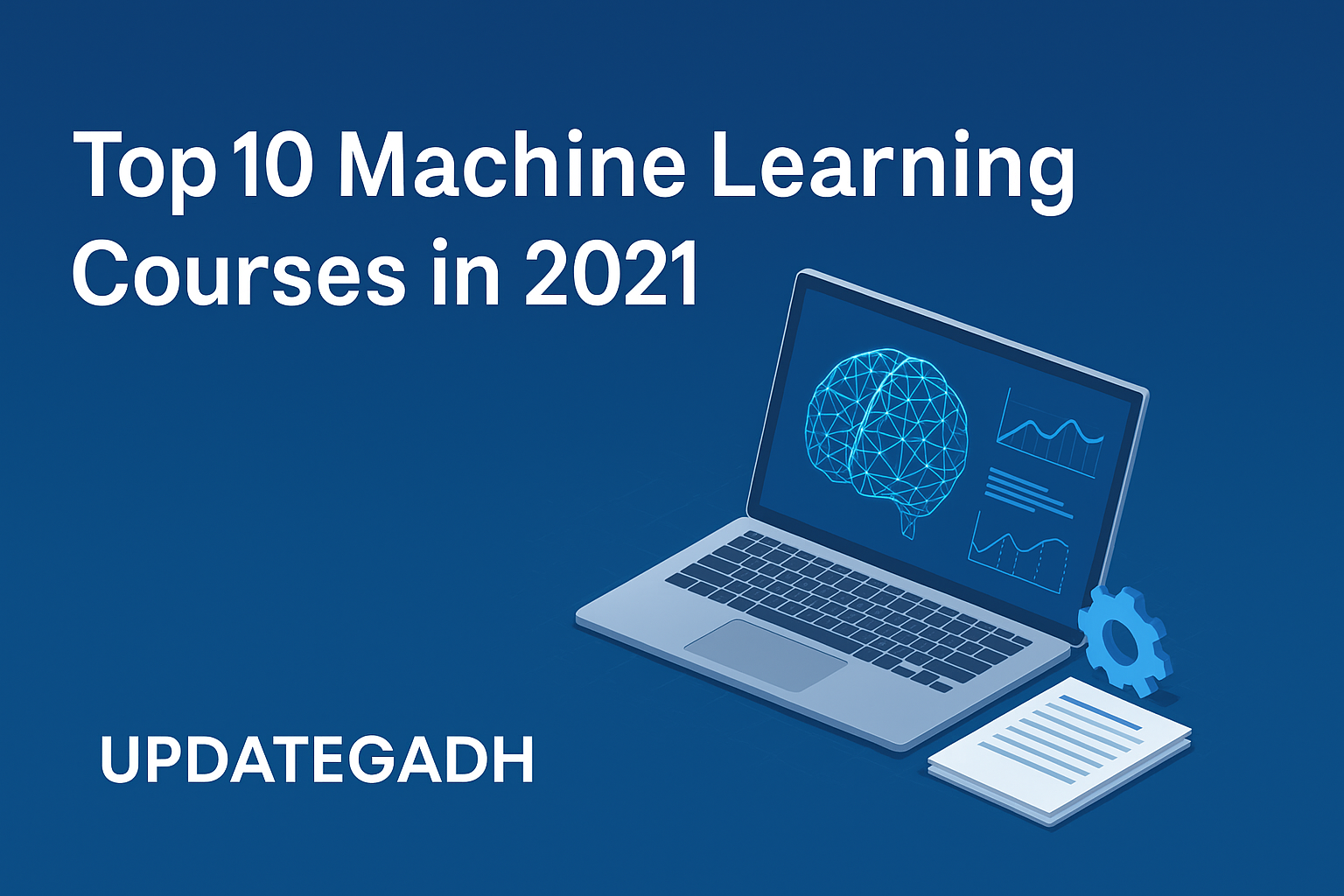

🔍 Classification Algorithm in Machine Learning | Explained with Examples – Updategadh
Classification Algorithm in Machine Learning
In the world of Supervised Machine Learning, algorithms are primarily categorized into two groups – Regression and Classification. While Regression deals with predicting continuous values, such as temperature or sales figures, Classification comes into play when we need to predict categorical values. In this blog post from Updategadh, we’ll explore what Classification Algorithms are, how they work, and where they are used in real-world applications.
Complete Python Course with Advance topics:-Click Here
SQL Tutorial :-Click Here
🧠 What is a Classification Algorithm?
A Classification Algorithm is a type of Supervised Learning algorithm used to predict the class or category of new observations based on past data. Essentially, it learns from a labeled dataset during training and then uses that knowledge to categorize new inputs into one of several predefined classes.
For example:
- Spam or Not Spam
- Yes or No
- Dog or Cat
- Positive or Negative
Here, each label is a category, not a continuous value, making it distinct from regression problems.
👉 Mathematical form:
In Classification, we map an input x to a categorical output y, such that:y = f(x)
where y is a discrete class label.
🎯 Objective of Classification Algorithms
Finding the correct class for a given data point is the primary objective of a classification algorithm. The algorithm uses patterns, rules, and relationships within the dataset to determine where a new instance fits. One of the most commonly cited examples is the Email Spam Filter, which uses classification to identify if a new email is spam or not.
📌 Types of Classification Algorithms
Classification problems can be categorized based on the number of output classes:
1. Binary Classification
- Only two possible outcomes.
- Examples:
✅ Spam or Not Spam
✅ Male or Female
✅ Pass or Fail
2. Multi-class Classification
- More than two outcomes.
- Examples:
🎵 Classifying types of music
🌾 Classifying crops
🧬 Classifying diseases
🧑🏫 Types of Learners in Classification Problems
There are two primary learning approaches used by classification models:
✅ Lazy Learners
- Do not build a model during training.
- Simply store the training data and wait until testing to perform classification.
- Pros: Faster training
- Cons: Slower prediction
Examples:
🔸 K-Nearest Neighbors (K-NN)
🔸 Case-Based Reasoning
✅ Eager Learners
- Build a classification model during training.
- Use the trained model to make predictions during testing.
- Pros: Faster predictions
- Cons: Longer training time
Examples:
🔸 Decision Trees
🔸 Naive Bayes
🔸 Artificial Neural Networks (ANN)
📚 Types of Classification Algorithms
There are two types of classification algorithms: linear and non-linear models.
🔹 Linear Models
- Logistic Regression
- Support Vector Machine (SVM) – Linear version
🔹 Non-linear Models
- K-Nearest Neighbors (K-NN)
- Kernel SVM
- Naive Bayes
- Decision Trees
- Random Forest
👉 Don’t worry if these sound complex now—we’ll explore each of these in future posts right here on Updategadh!
📊 Evaluating a Classification Model
Once you build a classification model, it’s crucial to evaluate its performance. Some common metrics in machine learning are listed below:
1. Log Loss (Cross-Entropy Loss)
- Utilised when a probability between 0 and 1 is the outcome.
- Lower values indicate better accuracy.
- For binary classification, it’s calculated as:
Loss = - [y * log(p) + (1 - y) * log(1 - p)]
Where:
y= actual outputp= predicted probability
2. Confusion Matrix
- A table that describes the model’s performance using:
- True Positives (TP)
- False Positives (FP)
- True Negatives (TN)
- False Negatives (FN)
| Actual Positive | Actual Negative | |
|---|---|---|
| Predicted Positive | True Positive (TP) | False Positive (FP) |
| Predicted Negative | False Negative (FN) | True Negative (TN) |
This helps in calculating:
- Accuracy
- Precision
- Recall
- F1 Score
3. AUC-ROC Curve
- ROC: Receiver Operating Characteristics
- AUC: Area Under Curve
- A graphical representation to visualize model performance across different thresholds.
- The closer AUC is to 1, the better the model.
💡 Real-Life Applications of Classification Algorithms
Classification algorithms are widely used across various industries. Some powerful use cases include:
🔐 Email Spam Detection
🎙️ Voice/Speech Recognition
🧬 Medical Diagnosis (Cancer Detection)
💊 Drug Classification
🧏♂️ Biometric Identification (Face, Fingerprint Recognition)
Download New Real Time Projects :-Click here
Complete Advance AI topics:- CLICK HERE
🏁 Final Thoughts – Updategadh Insights
Classification is a core concept in Machine Learning, especially useful when working with categorical data. Whether you’re filtering spam emails or diagnosing diseases, understanding how classification works is critical.
Stay tuned with Updategadh as we continue to break down each classification algorithm in detail, with hands-on examples, code, and real-world applications to help you master machine learning the smart way!
classification algorithms in machine learning python
classification in machine learning
in machine learning what is overfitting
classification in machine learning – geeksforgeeks
knn algorithm in machine learning
regression in machine learning
clustering in machine learning
machine learning algorithms pdf
chatgpt
naive bayes algorithm
classification algorithm in machine learning with example
classification algorithm in machine learning python
classification algorithm in machine learning geeksforgeeks










Post Comment